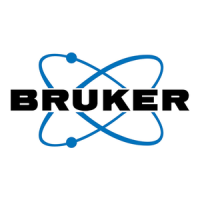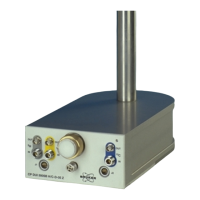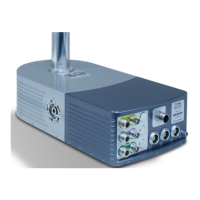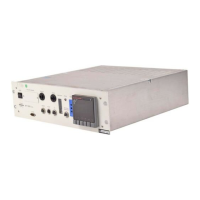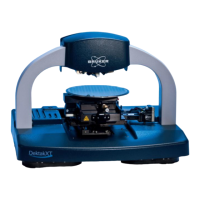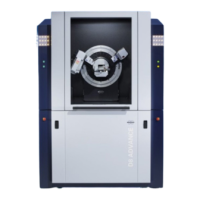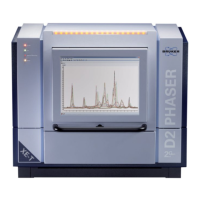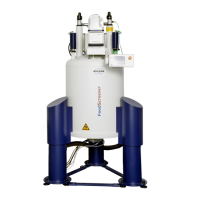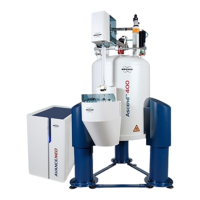Bruker Confidential Information
1.4. Software Control of the ContourGT-K
VSI Measurement Mode
Vertical scanning interferometry uses a broadband (normally white) light source. It is effective for
measuring objects with rough surfaces, as well as those with adjacent pixel-height differences greater
than 135 nm. VSI mode yields precision in the nanometer range. In vertical scanning interferometry,
the internal translator moves the objective while the camera periodically records frames. As each
point on the surface comes into focus, the modulation on that point reaches a maximum, then tapers
off as the objective passes through focus. By recording the height of the translator at maximum
modulation, the system can determine the height of each pixel. The maximum scan length for a
VSI scan is 10 mm.
PSI Measurement Mode
Phase-shifting interferometry uses a narrowband light source. It is typically used to test smooth
surfaces (roughness less than 30nm), such as mirrors, optics, or other highly polished samples. It
is very accurate, resulting in vertical measurements with sub-nanometer resolution. However, PSI
cannot obtain a correct profile for objects that have large step-like height changes. It thus becomes
ineffective as height discontinuities of adjacent pixels approach one quarter of the used illumination
wavelength (about 135 nm when using green light). In phase-shifting interferometry, the internal
translator precisely alters the optical path length of the test beam. Each optical path change causes
a shift in the fringe pattern. The shifted fringes are periodically recorded by the camera, producing
a series of interferograms. Computerized calculations combine these interferograms to determine
the surface height profile.
The Mechanics of Measurement
The OMM includes a camera, LEDs that provide green and/or white illumination, a scanner as-
sembly, and a measurement objective. The “interference” used to calculate the surface height is
achieved inside the measurement objective by splitting the light into reference and measurement
beams: the reference beam is reflected off a super flat reference mirror inside the objective, while
the measurement beam is reflected off the sample. The reference mirror inside the objective is
positioned so that it is in the same focal plane as the sample (that is, it is the same distance from
the beam splitter as the sample). In this configuration, the two light beams recombine and form an
interference pattern of light and dark bands called fringes. The number of fringes and their spacing
depends upon the sample shape and the relative tilt between the sample and the reference mirror.
If the sample is very flat, the fringes are straight. As the relative tilt between the sample and the
reference mirror is reduced, the number of fringes is also reduced until the sample and reference are
parallel, and the fringes are said to be nulled.
1.4 Software Control of the ContourGT-K
Vision64 is a state of the art metrology application that runs under Windows 7 64 bit edition.
Incorporating the latest computer technology, Vision64 is both powerful and easy to use. With
an ergonomic user interface design, using this application is intuitive and efficient. In conjunction
with Bruker’s best in class profiler instruments, Vision 64 provides unsurpassed capability for the
measurement and characterization of surface topography.
The Vision64 software controls the instrument settings, data analyses, and graphical output. It
allows for considerable customization of output display and enables analysis results to be stored to
5
